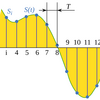16 bit? 24 bit?
when is it best to record in which bit depth? i understand that the bit depth is is relative to loudness in dB's (each bit = 3 dB i think?), but still don't quite grasp when to record in which. i'd assum 24 bit, then dither down to 16 bit to go to CD in the mastering process, but i am not sure if this is correct. any help, links, suggestions would be great! thanks
- Read more about 16 bit? 24 bit?
- 5 comments
- Log in or register to post comments
Dither: Still needed with 24-bit recording?
I have been reading a lot of articles explaining dither (because I didn't understand what that setting did in my sequencer program) and I now have a good understand about what dither is but none of the articles have cleared this up?
When recording at 24-bit does dither need to be used if the dynamic range is small and the peak levels around -6Bd?
- Read more about Dither: Still needed with 24-bit recording?
- 44 comments
- Log in or register to post comments
Any Reason to go to 64bit?
I notice some companies offering 64bit processing compatable hardware/software. Is there any realistic reason to start using 64 bit software and hardware and purchase a 64 bit computer. This is my first DAW setup that I am considering so I'm wondering if it's worth it to spend my money on a 64bit PC/Interface/Software.
- Read more about Any Reason to go to 64bit?
- 9 comments
- Log in or register to post comments
96k ADAT to Tascam fw1884
I wonder if somebody can direct me.
I have a fw1884 and also a Focusrite isa428 that i would like to get the ad card for.
My question is, the fw1884 has only one optical ADAT in and S/PDIF stereo in, assuming that one ADAT connector can only do 8 channels at 44.1k could I just hook up one of the ADATs and still get 4 channels at 96k?
- Read more about 96k ADAT to Tascam fw1884
- 2 comments
- Log in or register to post comments
Cubase 32bit or 24bit ?
Hi,
I have bought an M-Audio Delta44 to use with Cubase to increase recording clarity/headroom etc. I assumed the best setting then was to record at 96k/24 bit as per the spec of the card.
To maximise quality in clean tracks and resolution of reverb plugins (which still sound muddy) should I be using 32bit float?
thanks
Mark.
- Read more about Cubase 32bit or 24bit ?
- 32 comments
- Log in or register to post comments
how dither effects the sound after requantizing from 24bit to 16bit
Greetings Forumsters -
searching for analog to S/PDIF 24 bit converter schematic
Hi all I'm searching for a high-endanalog to S/PDIF 24 bit converter schematic for my DIY mic preamp . thanks for your help ;)
32bit Float to 24bit fixed?
32bit Float to 24bit fixed?
- Read more about 32bit Float to 24bit fixed?
- 2 comments
- Log in or register to post comments
MOTU 2408MKIII 24bit or 16bit at playback?
Hey everybody, I was just wondering if thw MOTU2408MKIII can play back at 24bit resolution or is it locked at 16bit.
- Read more about MOTU 2408MKIII 24bit or 16bit at playback?
- 2 comments
- Log in or register to post comments
Multitracker (24-Bit) Conversion & Drive Formatting?
People,
Looking at two 24-Bit Multitrackers (for expanding my studio operation to include location recording)...the Tascam 2488 & the Korg D1600.
Of these two units, does anyone know the mfg./model# of the onboard ADC ...or, more importantly...how the conversion/recording quality compares between the two?
- Read more about Multitracker (24-Bit) Conversion & Drive Formatting?
- Log in or register to post comments
